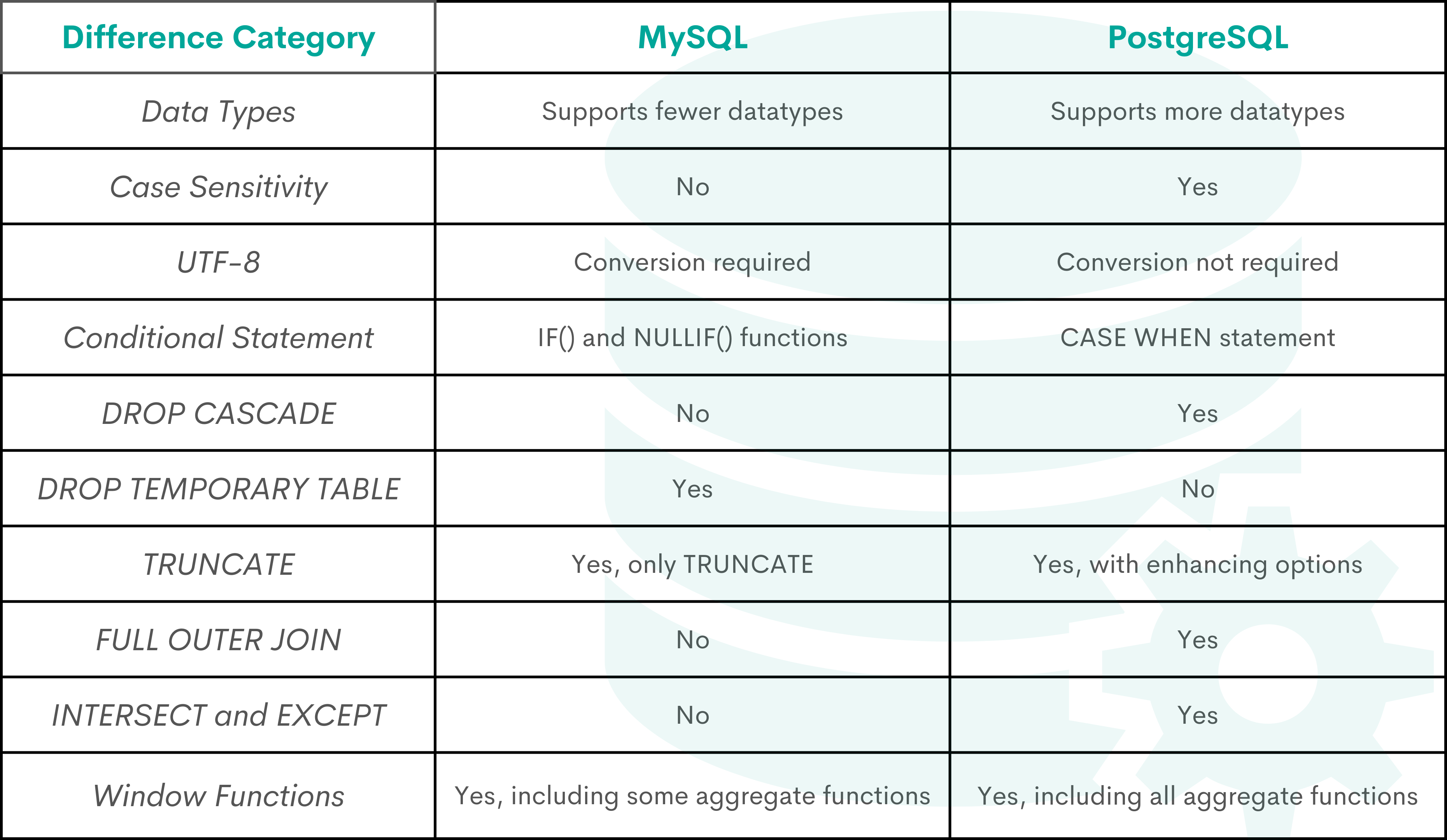

- Oracle vs postgres vs mysql update#
- Oracle vs postgres vs mysql free#
- Oracle vs postgres vs mysql windows#
Overall, MySQL and SQL Server offer more of defragmentation methods that Postgresql does. Technically, developers can even run garbage collector on a continuous basis, because it’s that efficient. SQL Server offers an efficient garbage collector that doesn’t create more than 15-20% of overhead. However, the method requires a lot of CPU and can affect the application’s performance. By doing so, the system frees up the disk space. PostgreSQL allows scanning the entire tables of a data layer to find empty rows and delete the unnecessary elements. Without going into much detail, we’ll just say that having that many options for table maintenance is convenient for developers, and it surely saves a lot of time. MySQL offers several approaches to defragmentation – during backup, index creation, and with an OPTIMIZE Table command. The database frees up the disk space that is not used properly so that a database can run faster. Therefore, maintenance should include defragmentation – the process of unifying the updated database by assigning indexes, revisiting the structure, and creating new pages.
Oracle vs postgres vs mysql update#
When developers update different parts of an SQL database, the changes occur at different points of the systems and can be hard to read, track, and manage. The difference between SQL Server and MySQL and Postgresql lies mainly in customizing the positions – SQL Server offers a lot more than others. The column-store database lets store updates in columns, like in column-driven databases.Īmong these three, SQL Server offers perhaps the most flexibility and efficiency, because it allows monitoring updated rows and columns, collecting errors, and automating the process. The in-memory engine allows analyzing the quality of an updated database with a garbage collector. The ROW Store handles the information on all previous row updates, IDs, and modified content. SQL Server: the database has three engines that are responsible for row updates. This multiplies the number of columns and rows and increases the size of the database, but in turn, developers benefit from higher readability. PostgreSQL: developers insert a new column and row in order to update the database. If something goes wrong, developers can always go back to the previous version. In the MySQL case, a solution updates data automatically to the rollback storage. This criterion refers to the algorithms that a database uses to update its contents, speed, and efficiency. The key priority is the systems’ flexibility, security, and usability. Here we evaluate the ease that the data can be modified with and the database defragmented.

Firstly, we’ll start by exploring the in-depth functionality. In this comparison, we’ll take a look at the functionality of the three most popular SQL databases, examine their use cases, respective advantages, and disadvantages.
Oracle vs postgres vs mysql free#
Price: the database has a free edition for developers and small businesses but only supports 1 processor, 1GB of maximum memory used by the database engine and 10GB maximum database size. For companies that manage multiple teams, these tools make a big difference in day-to-day work.

The SQL Server infrastructure includes a lot of additional tools, like reporting services, integration systems, and analytics.
Oracle vs postgres vs mysql windows#
It’s also considered to be one of the most compatible systems with Windows services. It’s preferred by companies who are dealing with large traffic workloads on a regular basis.

Unlike Postgresql vs MySQL, SQL Server is a commercial solution. We wouldn’t go that far, but it’s definitely a highly universal solution. Some developers go even as far as to claim that it’s the most advanced open-source database on the market. PostgreSQLĪ tried-and-proven relational database that is known for supporting a lot of data types, intuitive storage of schemaless data, and rich functionality. Read our comparison of MongoDB vs MySQL to make the right choice of a database solution.


 0 kommentar(er)
0 kommentar(er)
